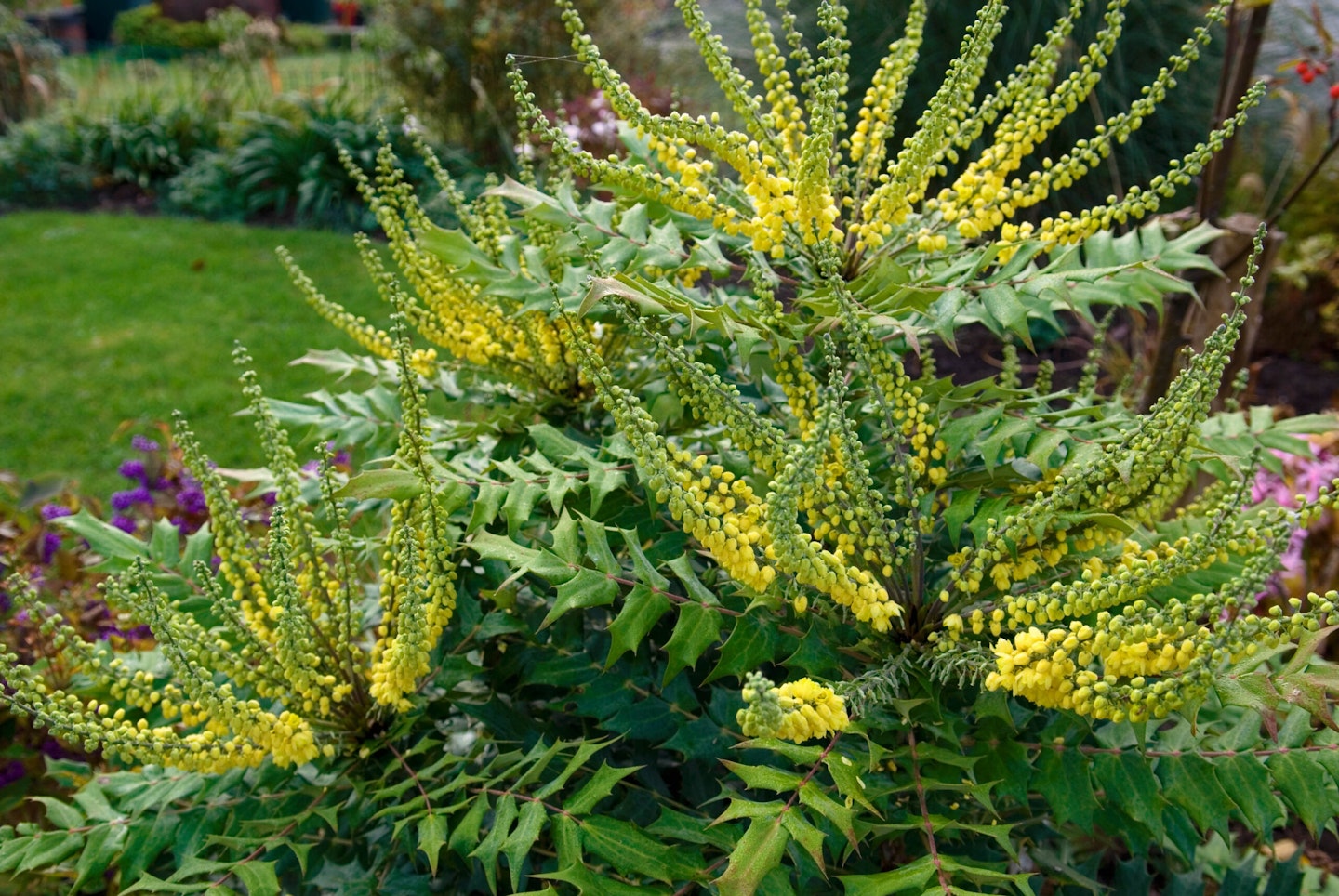Annuals and perennials are the go-to plants if you’re keen to provide sources of food for insects, but if you want some year-round structure and height in your garden it’s important to include shrubs too. Not all flowering shrubs are great for insects, though. For instance, Forsythia intermedia looks like it would provide a banquet for insects with its profusion of bright yellow blooms, but it actually produces very little pollen or nectar. However, there are plenty of flowering shrubs that will add an extra layer of interest to your borders while also keeping the bees and butterflies happy.
SPRING
The ornamental quince, chaenomeles, flowers from late February through to May, its bare branches bearing clusters of blossom-like blooms, providing a valuable food source for emerging bees. Flower colour options include red, white and pink, or the peachy tones of the exquisite ‘Geisha Girl’. Train it against a wall or fence (prune it after flowering, shortening sideshoots to two to four buds and tie the stems to horizontal wires), or grow it as a standalone shrub. It’s generally unfussy as long as the soil isn’t waterlogged.
Rosemary (Salvia rosmarinus) is primarily grown for its aromatic, evergreen foliage, but it’s also a surprisingly good plant for pollinators. The small flowers, which are typically blue but, depending on the variety, can be white or pale pink, are a favourite with bees – in parts of France honey made predominantly from the flowers of rosemary is highly prized. This Mediterranean native needs full sun and well-drained soil.
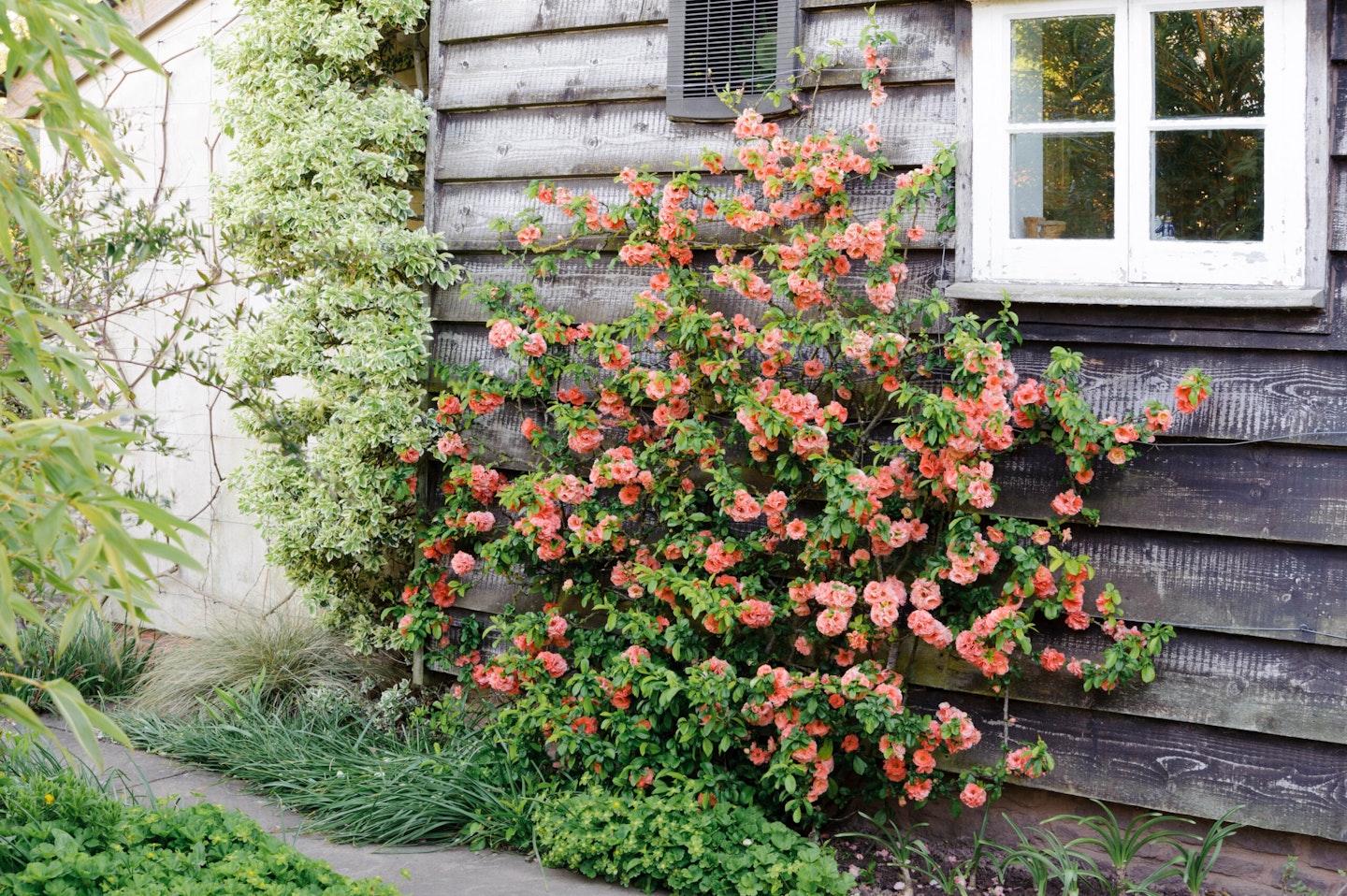
SUMMER
Shrubby potentillas are underrated plants that deserve more attention. They’re mid-sized, deciduous shrubs, with slender leaves and an abundance of single flowers from April to October. The blooms resemble those of a wild rose but they’re smaller and colours range from vibrant oranges and pinks to pastel shades. Reliable varieties include the white-flowered Potentilla fruticosa ‘Abbotswood’ and the pale lemon ‘Primrose Beauty’.
Privet is fantastic for a wide range of pollinators, whether it’s the native wild species, Ligustrum vulgare, or garden privet, Ligustrum ovalifolium, which was introduced from Japan. Insects are attracted by the plumes of small, white, fragrant flowers produced in June. Typically grown as a neatly-clipped hedge, you’ll need to leave the trimmers in the shed to allow it to bloom.
Roses are quintessential summer-flowering shrubs, but the species, or wild roses, are the ones to grow if you want to feed insects because rather than multiple rows of petals like those of cultivated roses, these have open, single blooms. There’s also the added bonus of wonderful autumn hips. Garden-worthy options include the dog rose, R. canina, R. glauca, with its striking blue-grey foliage and the ruby-red flowers of R. moyesii ‘Geranium’.
Lavender’s hummocks of aromatic, grey-green foliage have year-round presence, but it’s the slender flower spires packed with essential oils that attract different species of bees, butterflies and moths during the summer months. It prefers light, well-drained, chalky soil, but if you don’t have these conditions it can be grown in containers. Lavandula intermedia and its cultivars are said to be the most attractive to bees.
Veronica, formerly known as hebe, offers gardeners a selection of foliage options including variegation and leaves that change colour in winter as the temperature drops. Set against this leafy backdrop are spikes of small flowers in shades of purple, pink or white that are a magnet during the summer months for bees and other pollinators.
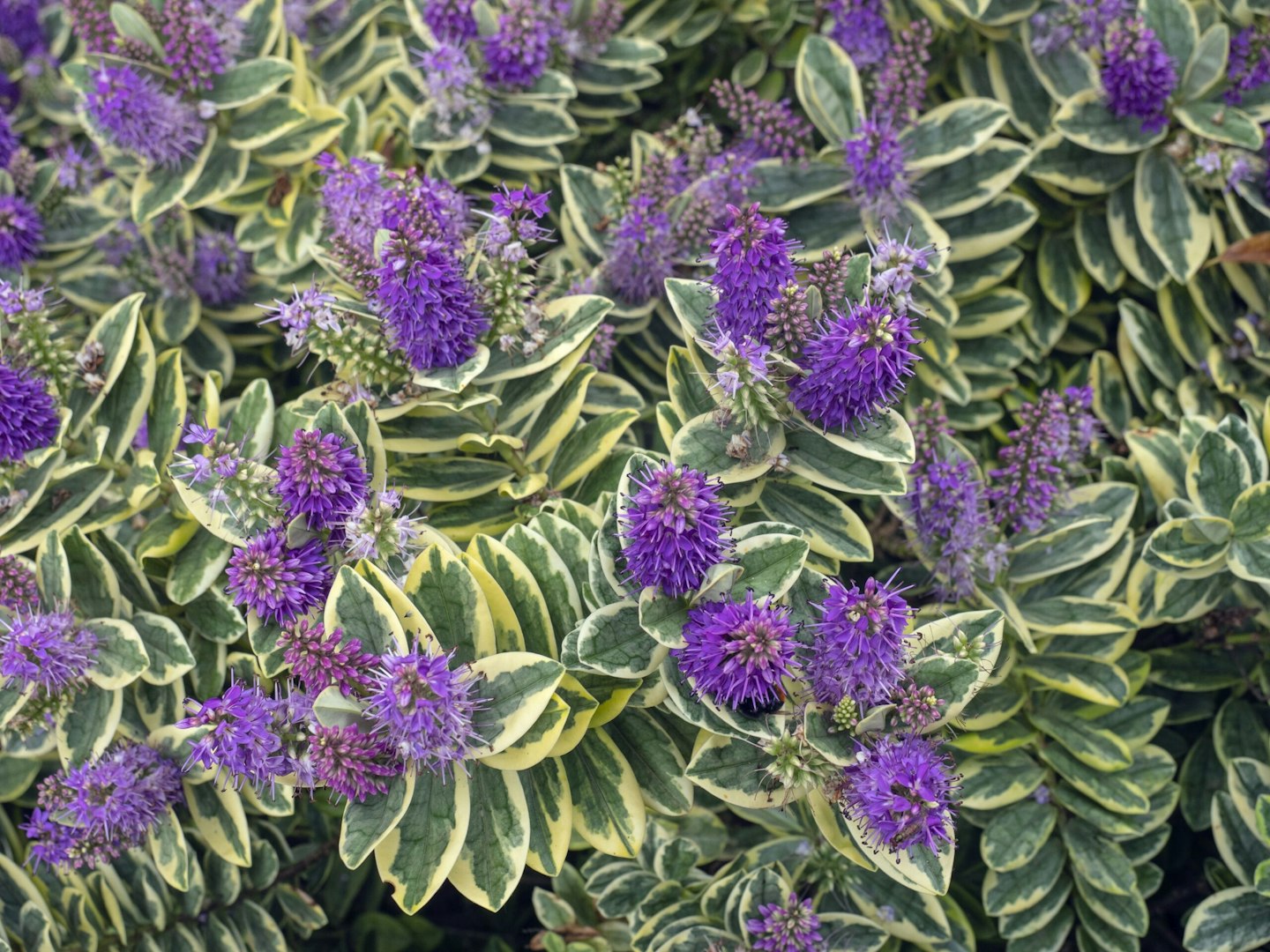
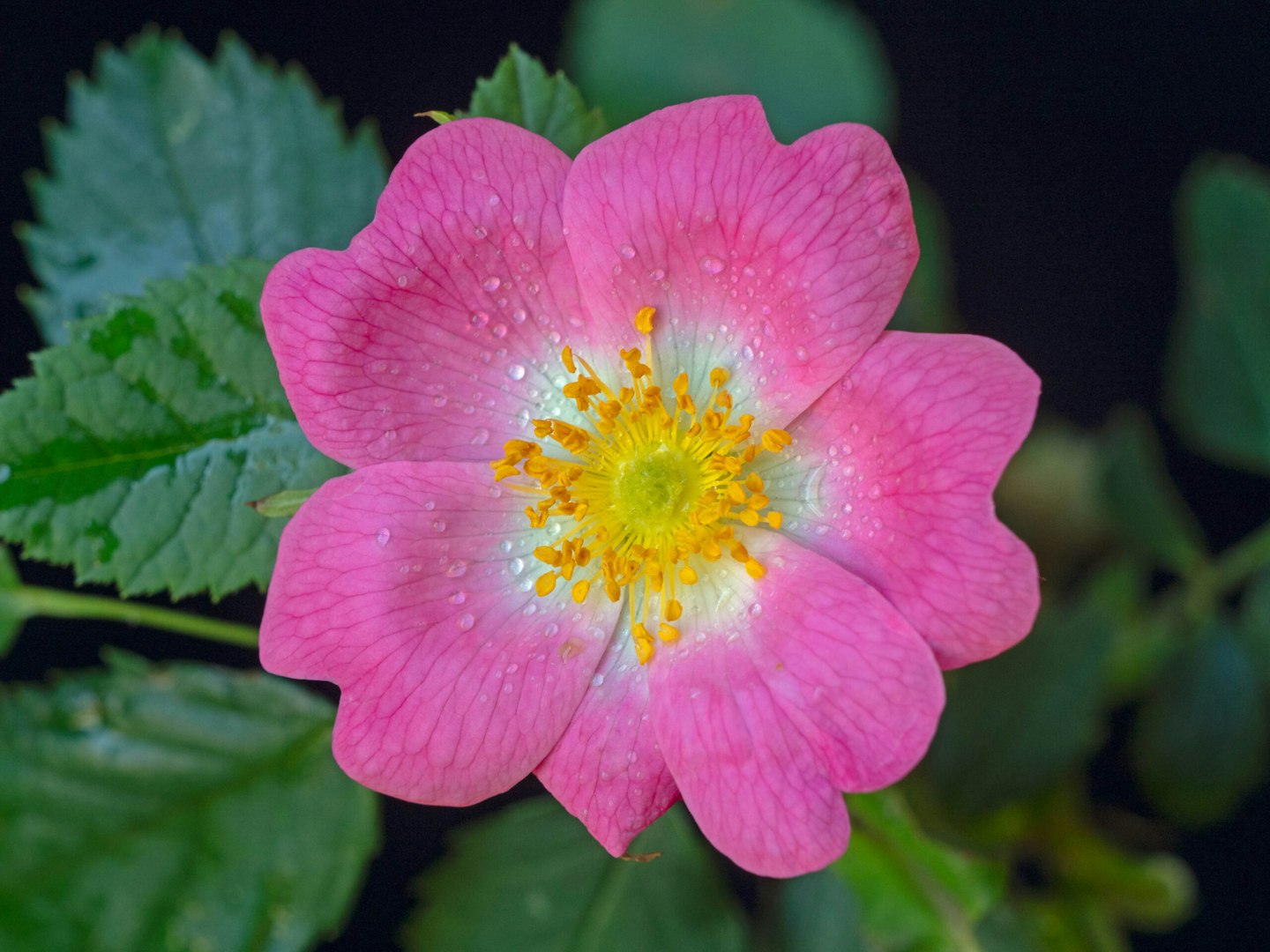
AUTUMN
Perovskia, the Russian sage, forms a loose mound of upright stems bearing fragrant, grey-green leaves and a plethora of tiny, violet-blue flowers in late summer and autumn that attract a host of insects. When the leaves fall in autumn they leave behind a bare, silvery stem structure that looks stunning during winter. Perfect for gravel or Mediterranean-style gardens.
The cape mallow, _Anisodontea capensis ‘_El Rayo’, has stiff, upright stems around 1.2m tall, attractive green, lobed leaves and showy rose-pink flowers with magenta centres, which the bees love. It’s borderline hardy, so growing it in a large pot and moving it to somewhere with a bit of protection over winter is ideal. Mine has flowered year-round, including in the cold frame over winter when there was snow in the garden, but it’s at its peak from late summer through autumn.
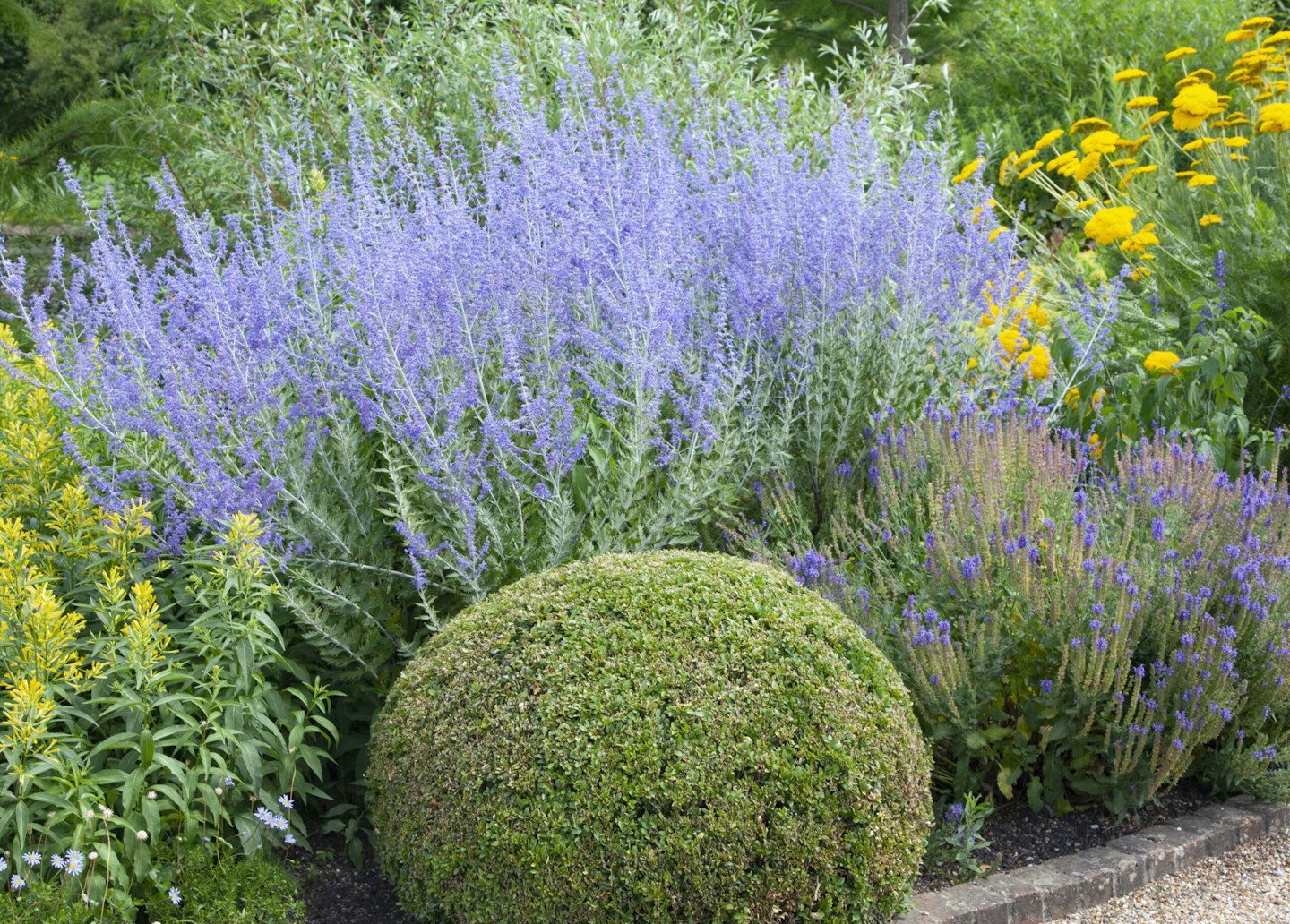
WINTER
Mahonia media ‘Charity’ and ‘Winter Sun’ are handsome evergreens with branches of dark green, holly-like foliage and clusters of small, deep yellow flowers that smell like lily of the valley. These appear from early winter to mid-spring when little else is in bloom and are popular with bees. The black fruit that follows will be eaten by birds. They like a bit of shade and soil that’s neither too dry nor too wet.
Winter-flowering honeysuckle, Lonicera fragrantissima, fills the air with scent on mild winter days, when its twiggy mass of leafless branches are covered in small, cream-white blooms that attract bees looking for food. Bright green leaves emerge in spring. It makes a medium-sized shrub around 2m tall with a similar spread.
